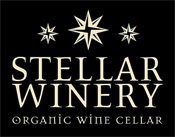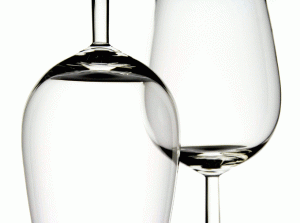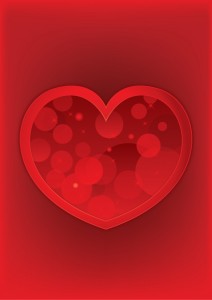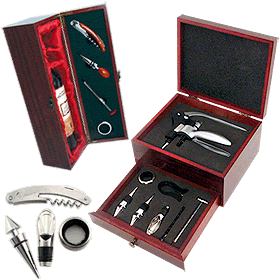by Lorri | Feb 27, 2013 | UnCorked
 I have explored and tasted many wines, always looking for the bottle that has it all. And depending on what you’re looking for, I have one to add to the list.
I have explored and tasted many wines, always looking for the bottle that has it all. And depending on what you’re looking for, I have one to add to the list.
This wine is organic, contains no added sulfites, tastes great, and did I mention ethical integrity in production? Of all the places you may be thinking, chances are South Africa is not on the list. But this wine from Stellar Organic Winery is produced just north of Cape Town.
With a history marred by human rights issues and the ramifications of colonialism, many South African wineries have been stepping forward in finding solutions. Today, SouthAfrica leads the world in environmental sustainability and regulated production integrity, meaning they are looking after not only the earth but also the people in the community.
In 2002, the Wine Industry Ethical Trade Association, a nonprofit, was created to improve the living and working conditions of workers onSouth African farms. Wineries and vineyards belonging to the trade proudly boast the “Fair Trade Certified Wine” on the label. Stellar Winery is one of those. For each bottle sold, Stellar pays into the Stellar Employees Trust, an independently audited fund. These funds are used for projects like organic vegetable farming, an education fund to benefit employees’ children, and a computer center at the local primary school.
This winery has committed itself to the community and also to the practice of sustainability. It is the largest organic wine producer in South Africa and is the top-selling organic wine brand in theUnited Kingdom. In addition to organic growing practices, Stellar’s wines do not contain added sulfur, and the winery uses a vegan fining process.
So, for all of you seeking sustainable, organic and vegan wines that pass the taste test, here’s two to add to your list.
- 2012 Stellar Organics Merlot, South Africa (about $12 retail)
- 2012 Stellar Organics Cabernet Sauvignon, South Africa (about $12 retail)
by Lorri | Feb 20, 2013 | UnCorked
 Over the years man’s choice of drinkware for enjoying wine has evolved. As early as the fifth century animal horns and sturdy pottery were used as wine glasses. Today there are no shortages of styles and quality of glasses available. The choices — stemmed or stemless, goblets or flutes, wide or narrow bowl, clear, frosted or colored glass — can be overwhelming. So it’s no surprise that for many of us selecting the right glass can be as confusing as shopping for the wine itself.
Over the years man’s choice of drinkware for enjoying wine has evolved. As early as the fifth century animal horns and sturdy pottery were used as wine glasses. Today there are no shortages of styles and quality of glasses available. The choices — stemmed or stemless, goblets or flutes, wide or narrow bowl, clear, frosted or colored glass — can be overwhelming. So it’s no surprise that for many of us selecting the right glass can be as confusing as shopping for the wine itself.
But finding the perfect glass is not as complicated as you think. There are no official rules, but taking the time to consider a few guidelines and learn how to properly care for glassware may increase your wine enjoyment.
The type of glass offers several enhancements to a wine. If the glass is clear and clean it adds to the wine’s color, an important part in the appreciation of wine.
A stemmed glass not only looks elegant, the stem provides a place to hold the glass without warming the bowl or leaving smudge marks. The bowl size allows aromas their optimal expression.
Fragile, fragrant and delicate wines such as Champagne and other sparkling wines need a small bowl and narrow body to enhance the bubbles.
White wine glasses, though larger than champagne flutes, are smaller to enhance the fragrance, but most importantly the smaller bowls allow the wine to stay cooler longer.
Red wine glasses with large, round bowls and wide rims allow more contact with air, something usually needed to fully appreciate powerful, robust styles.
Price is an obvious consideration, but don’t forget about space. The more types of glasses you invest in, the more space you will have to dedicate to storage. If space (and budget) is not an issue there are literally hundreds of styles and sizes available, even varietal-specific glasses.
But for most of us it is sufficient to have three styles: globe or balloon-shaped glasses for red wine; “tulip” shaped for white wine; and flutes for Champagne.
Although most modern wine glasses are dishwasher safe, washing them in the dishwasher may hurt the wine. All glasses contain scratches, crevices and imperfections that, though imperceptible to the naked eye, can harbor trappings of detergent that deter the aromas and appearance of a wine. Also, ‘‘rinse aids’’ add further layers of unwelcome film. The best method for cleaning wine glasses is simply a soft cloth and hot water with no soap or detergent.
Of course, in some instances use of a mild detergent, may be desired, such as when the outside of the glass becomes soiled with something such as lipstick, fingerprints or food that water alone won’t wash away. Simply use a brush and mild detergent then clean with hot water. To avoid water spots, use a soft, lint-free cloth to hand dry.
by Lorri | Feb 13, 2013 | UnCorked
 For your Valentine celebration, consider the perfect sweet wine for your sweetheart. (OK, I agree, that was a bit cheesy as an opener, but it is Valentine’s week.)
For your Valentine celebration, consider the perfect sweet wine for your sweetheart. (OK, I agree, that was a bit cheesy as an opener, but it is Valentine’s week.)
Americans possibly use the phrase “sweet, but not too sweet” more than any other country in the world when describing wine – not that shocking for those of us in the South, when we consider our tea order is followed by “sweet” or “unsweet.”
Sweet wines can exhibit some of the most alluring examples of the complexity of winemaking. The key to understanding the difference is a simple and uncomplicated comparison of sweet wines with sugar added in the process and sweet wines whose complexity and sweetness are miracles of nature. Both processes will produce sweet wines, but grapes developing natural sweetness endure an astounding complex life overthose with just added sugars.
I consider the sweet wines of Sauternes, France, one of the most romantic stories in viticulture. Keeping in mind wine, unlike other beverages, faces a long labor of love simply to arrive on your dinner table. This region is one of those examples. Sauternes has a unique microclimate created by the rivers Garonne and Ciron. Each year in the fall the cool spring-fed Ciron waters flow into the warmer tidal waters of the Garonne. This unique occurrence initiates late evening mists enveloping the vineyards until the morning of thefollowing day. As the sun rises and shines upon the vineyard it slowly burns off the mist. This distinctive occurrence in the vineyard encourages the growth of a fungus known as botrytis rot that attacks grapes and causes them to shrivel and rot. The miracle is in the mist covering the vineyards activating the rot. Without this mist, the grapes would not gain the complexity and concentration that give these sweet wines their enduring legend.
So finding a romantic wine gift of sweetness is easy, but a gift of a romantic miracle is a gift any wine lover will appreciate and adore.
THE VALUE
- 2010 Barton & Guestier Sauternes, France (about $25 retail)
THE SPLURGE
- 2007 Chateau Rieussec Sauternes, France (about $72 retail)
by Lorri | Feb 6, 2013 | UnCorked
 I’ve said it many times before: My intention is never to come across as the wine police. I don’t have a wine thermometer, Oxford Companion or vintage chart tucked away in my purse. But several of my most irritating wine peeves continue to happen. So call this a venting column or a call for some sort of citizen wine watch to bring attention to the issues.
I’ve said it many times before: My intention is never to come across as the wine police. I don’t have a wine thermometer, Oxford Companion or vintage chart tucked away in my purse. But several of my most irritating wine peeves continue to happen. So call this a venting column or a call for some sort of citizen wine watch to bring attention to the issues.
Last week I was researching single-serving bottles as value options. As I was tasting the first pinot grigio I was shocked at the poor quality of the wine and its almost undrinkable state.
Confusion set in because it was a reliable brand, and more importantly, it is very rare to find such obvious faults in modern wines. However, the mystery was quickly solved as I looked at the bottle closer to see it was a 2009 vintage – grotesquely past its prime.
It wasn’t so much my own experience that frustrated me – tasting wine is part of the job – but knowing someone new to wine would quite possibly never drink wine again after that single bottle.
So, a quick review on age and wine. Very few white wines are produced to improve with age and most deteriorate quickly. Many mid-market chardonnays are made from very ripe grapes with low acid and added oak dimensions, making them unpleasant when the fruit flavors diminish. Light-bodied wines like sauvignon blanc and pinot grigio are enjoyed because of the refreshing, fruity and zippy acid. After just a year or two of their release, most will lose these traits.
My advice is the same for dining out and retail shopping. For everyday-drinking white wines, buy the most recent vintage. Be sure that if you ordered a 2010 from the wine list you are not served a 2008. Reputable restaurants and retailers take their wine inventory seriously and rotate out any bottles that are losing their luster; less reputable ones may just be moving out inventory.
Another grievance is serving wines too warm or too cold. This is definitely a subject on which you have heard me preach before. Recently, my husband and I sat down at a restaurant to enjoy a lovely dinner paired with an exceptional favorite bottle of wine. Our red wine was on the extreme side of warm, borderline hot. This issue isn’t a matter of wine snobs setting out to argue with the sommelier; wines served too warm or too cold simply are not enjoyable.
The technical explanation is that the right serving temperature is intended to bring out a wine’s depth of taste.Red wines that are too warm lose fruitiness and structure, leaving only the taste of tannin and alcohol. White wine served too cold rarely has much flavor at all. For many of us, wine is an essential part of a pleasurable dining experience, so don’t be too intimidated to ask your waiter to slightly cool your red wine if it is too warm, or to request that a white be served at the proper temperature. There’s no need to pull out your wine thermometer; simply let your preference and palate guide you.
And finally, as tempting as it may be, don’t add ice cubes to hasten chilling. A good quality wine has a balance of water, sugar, acid, tannin and alcohol. Adding ice will destroy this balance and ruin the wine.
by Lorri | Jan 30, 2013 | UnCorked
 Of course I love tasting wine … but tasting wines with the rock stars of the wine industry takes tasting to a whole new level. Earlier this month a group of Napa winemakers and owners convened on our perfect share of the South.
Of course I love tasting wine … but tasting wines with the rock stars of the wine industry takes tasting to a whole new level. Earlier this month a group of Napa winemakers and owners convened on our perfect share of the South.
In the weeks to come, this column will feature some of those winemakers and their wines.
First up is Steve Reynolds, owner and winemaker of Reynolds Winery. Reynolds is just one of those guys everyone wants to be around.
We’ve met on several occasions and I always look forward to sharing a glass of wine with him, with his laid-back personality and wonderful sense of humor.
His father was a hobby winemaker, so Reynolds was around the craft most of his life. When his family lived in Germany, they spent vacations as many wine-loving European families do: in the sacred vineyards of Europe. Sacred for his father I’m sure, but not so much for most kids.
I have dragged mine around on such adventures for years, and understand this amusing part of his childhood.
In 1994, Reynolds left his career as a dentist and, with his wife, Suzie, bought a 100-year-old chicken ranch that needed “lots of love” to have potential for fine winemaking. As tribute to their substantial hardships – the stigma of being a newcomer to Napa Valley, arduous startup politics and other challenges – Reynolds aptly, if not a little wryly, named one of his red blends “Persistence.”
Today, the Reynolds family remembers the journey, and those of us honored to savor their wines look forward to their future limited-production, hand-crafted wines known throughout the world.
- 2006 Reynolds Family Winery Napa Valley Chardonnay, California (about $38 retail)
- 2006 Reynolds Family Winery Persistence, California (about $58 retail)
by Lorri | Jan 23, 2013 | UnCorked
 Wine alone is amazing, but adding ideal accessories can make the experience of drinking and collecting wine extraordinary.
Wine alone is amazing, but adding ideal accessories can make the experience of drinking and collecting wine extraordinary.
THE NOVICE WINE DRINKER
The novice who only opens bottles on special occasions only needs a few items. As you gain and explore more wine options you’ll know its time to begin adding to your accessories. Most likely, adding different styles of wine glassware will be your first expansions.
- The equipment: Basic wine opener, all-purpose wine glass, champagne flutes, bottle cooler and small wine rack.
THE AMBITIOUS WINE DRINKER
Most wine drinkers have expectations of what they prefer to drink but many people are moving away from the single wine choice and becoming more adventurous, one day drinking a Spanish Cava and the next a California cabernet. Anyone who is exploring and building upon a collection needs useful accessories, but most important is appropriate glassware.
- The equipment: White, red and champagne flute glassware, decanter, ice bucket, capsule (foil) cutter, higher grade wine opener, wine carrier, wine thermometer, a vacuum pump for storage, cleaner that removes wine stains and a wine storage rack and/or a wine refrigerator.
THE CONNOISSEUR WINE DRINKER
The connoisseur may or may not be a wine professional. However, this is the person who takes wine appreciation to the next level. If money is not an object, the wine main accessory should be a home built around the design of your wine cellar not the other way around. If you are at this level in your exploration, you most likely have all the required tools, but are looking to add accessories to your stash.
- The equipment: Decanting funnel, glass polishing cloth, magnetic wine collar, Laguiole corkscrew, label remover, champagne re-sealer, a wine wand, decanting carafes for a single bottle and magnums, Champagne pliers and varietal specific glassware.
 I have explored and tasted many wines, always looking for the bottle that has it all. And depending on what you’re looking for, I have one to add to the list.
I have explored and tasted many wines, always looking for the bottle that has it all. And depending on what you’re looking for, I have one to add to the list.
 For your Valentine celebration, consider the perfect sweet wine for your sweetheart. (OK, I agree, that was a bit cheesy as an opener, but it is Valentine’s week.)
For your Valentine celebration, consider the perfect sweet wine for your sweetheart. (OK, I agree, that was a bit cheesy as an opener, but it is Valentine’s week.) I’ve said it many times before: My intention is never to come across as the wine police. I don’t have a wine thermometer, Oxford Companion or vintage chart tucked away in my purse. But several of my most irritating wine peeves continue to happen. So call this a venting column or a call for some sort of citizen wine watch to bring attention to the issues.
I’ve said it many times before: My intention is never to come across as the wine police. I don’t have a wine thermometer, Oxford Companion or vintage chart tucked away in my purse. But several of my most irritating wine peeves continue to happen. So call this a venting column or a call for some sort of citizen wine watch to bring attention to the issues.
 Wine alone is amazing, but adding ideal accessories can make the experience of drinking and collecting wine extraordinary.
Wine alone is amazing, but adding ideal accessories can make the experience of drinking and collecting wine extraordinary.